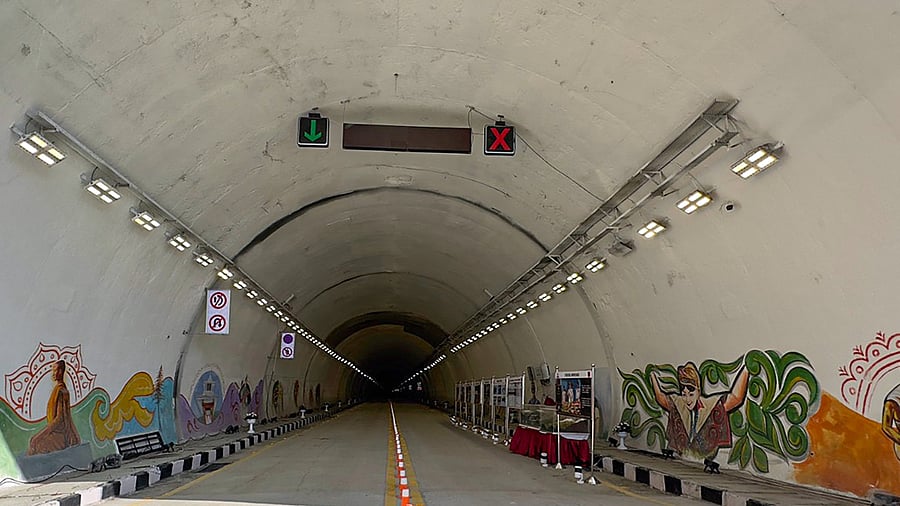
Representative image
Credit: PTI Photo
Bengaluru: Bengaluru's civic body, which has proposed to build an 18-km tunnel road between Hebbal and Central Silk Board, has found that the project will be "viable" only when cars are charged an average toll of Rs 16 per km. This translates to Rs 288 for the full stretch.
The proposed toll for the tunnel road is much higher than the charges for the 119-km Bengaluru-Mysuru Expressway.
In a feasibility report, which was made public last week, the Bruhat Bengaluru Mahanagara Palike (BBMP) analysed three different traffic scenarios along the north-south corridor for the horizon years 2031 and 2041. The report estimates that in 2031, 72,507 cars and 1.28 lakh two-wheelers will use the stretch during the morning peak hour. However, it does not anticipate a significant increase in 2041, with the usage of two-wheelers and cars expected to rise by just 50,000 and 13,704, respectively.
The BBMP predicts that approximately 15 per cent of the total traffic volume will divert to the proposed north-south corridor, which leads to the Kempegowda International Airport (KIA).
However, the report does not specify the number of toll plazas planned along the stretch, although the 18-km underground road will have eight entry and exit points.
The feasibility study estimates the cost of the 18-km twin-tube tunnel road at a minimum of Rs 15,000 crore. The civic body hopes a private construction firm will fund at least 40 per cent of the total project cost, as the state government has agreed to offer tolling and asset monetisation rights in return.
BBMP Chief Commissioner Tushar Girinath stated that the proposal was drawn up in line with the guidelines of the Ministry of Road Transport and Highways (MoRTH). "We first studied the traffic volume along the stretch. Based on the data, we calculated the toll fee for the next 25 years to assess the project's viability," he said. "The government will take the final decision."
Former Infosys CFO Mohandas Pai said he was “happy” that the government was planning to enhance road capacity along the north-south corridor. However, he wondered whether the government had studied alternative solutions, such as widening existing roads or building an elevated corridor before finalising the tunnel road.
"Since the degree of challenges in executing a tunnel road is greater, the government must involve a competent agency to study the alternatives. This project is not like the Peripheral Ring Road, which has wider acceptance as it opens up the periphery for development activities.”
Satya Arikutharam, an independent mobility consultant, said the traffic demand modeling indicated that the tunnel road would face traffic jams from the very first day. "The BBMP's feasibility report, despite the traffic demand results suggesting it’s not worth it, goes on to recommend the tunnel road. A public-transport-first approach is the only way forward for Bengaluru," he said.